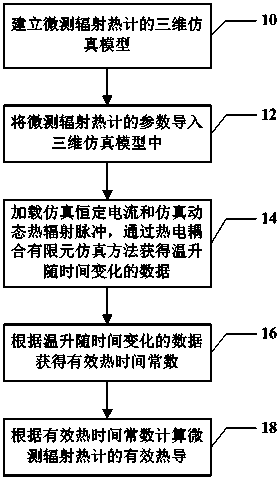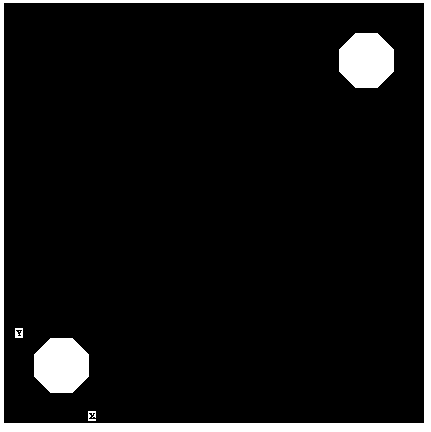Method for determining effective thermal conductance of micro-bolometer
A technology of microbolometer and effective heat, which is applied in the field of infrared detectors, can solve the problems of error, affecting the effective thermal conductivity value, and affecting the accuracy of thermal parameters of the microbolometer, so as to achieve accurate and precise thermal conductivity value high effect
- Summary
- Abstract
- Description
- Claims
- Application Information
AI Technical Summary
Problems solved by technology
Method used
Image
Examples
Embodiment Construction
[0040] The specific steps of the method for determining the effective thermal conductance of a microbolometer according to an embodiment of the present invention will be described in detail below with reference to the accompanying drawings.
[0041] figure 1 is a schematic flowchart of a method for determining the effective thermal conductance of a microbolometer according to an embodiment of the present invention.
[0042] like figure 1 As shown, in an embodiment of the present invention, in step 10, a three-dimensional simulation model of the microbolometer may be established first.
[0043] In the embodiments of the present invention, any suitable method may be used to establish a three-dimensional simulation model of the microbolometer. For example, in one embodiment, a three-dimensional simulation model of a microbolometer can be built using MEMS (micro-electromechanical system) software.
[0044] In the embodiment of the present invention, the three-dimensional simula...
PUM
 Login to View More
Login to View More Abstract
Description
Claims
Application Information
 Login to View More
Login to View More - R&D
- Intellectual Property
- Life Sciences
- Materials
- Tech Scout
- Unparalleled Data Quality
- Higher Quality Content
- 60% Fewer Hallucinations
Browse by: Latest US Patents, China's latest patents, Technical Efficacy Thesaurus, Application Domain, Technology Topic, Popular Technical Reports.
© 2025 PatSnap. All rights reserved.Legal|Privacy policy|Modern Slavery Act Transparency Statement|Sitemap|About US| Contact US: help@patsnap.com



